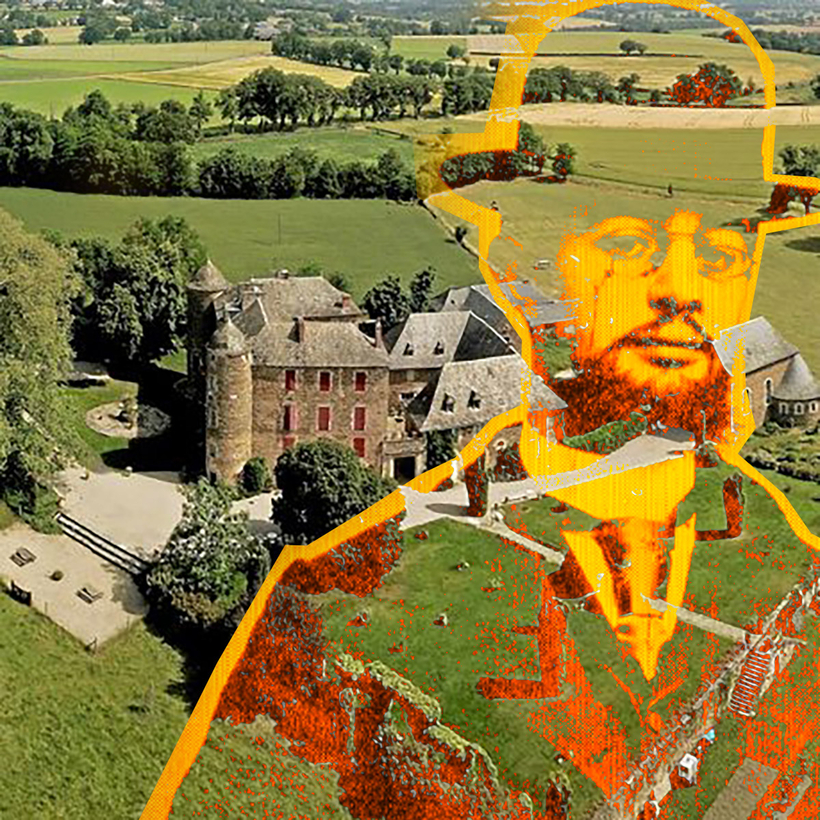Nobody was more Parisian than Henri de Toulouse-Lautrec, the painter who captured the color and sweat of turn-of-the-century Montmartre and its Moulin Rouge scene in a stripped-down working way, where you could taste the absinthe and choke on the Gauloises.
Known as the quintessential Parisian rake, Toulouse-Lautrec was actually a transplant, born into an old aristocratic family, the de Toulouse-Lautrec-Monfas, whose château, the Château du Bosc, in the South of France near the city of Albi, was Henri’s birthplace and occasional vacation retreat.
Today, the Château du Bosc is the subject of a legal dispute, as the descendants of the immortal painter have accused a couple, Jean-Claude Putzola, 69, and his partner, Corinne Marino, 63, of duping the painter’s late great-grandniece, Nicole Tapié de Celeyran, into bequeathing the château to them instead of to the family.

The formal accusation in French is abus de faiblesse (“abuse of weakness”), a legal grab-all term levied in fraud cases against people who have preyed on the elderly or invalids in hopes of financial gain.
In Tapié de Celeyran’s case, Putzola and Marino are accused of playing the long game with the late 91-year-old, moving in with her, gradually separating her from her family, redirecting her mail, and changing her phone number, all while convincing her to change her will twice, in 2015 and 2016, making them the sole heirs of the 12th-century château.
In her brief, Sylvie Rouanne, the investigating judge, wrote: “[They] exploited Nicole Tapié de Celeyran, her ignorance of commercial law, her fear, her credulity and the isolation in which they placed her.”
The formal accusation in French is abus de faiblesse (“abuse of weakness”), a legal grab-all term levied in fraud cases against people who have preyed on the elderly or invalids in hopes of financial gain.
Since Tapié de Celeyran’s death, in 2016, Putzola and Marino have continued to run the château as a tourist destination and homage to Toulouse-Lautrec’s career, charging $9 at the gate.
The trial is set for next June. Putzola and Marino have denied all charges, claiming through their defense attorney, Elian Gaudy, that everything was done with “the utmost transparency.”
Although seemingly brazen, cases of abus de faiblesse involving the French rich and famous are as regular as wine vendanges in the fall.
In 2007, the family of Liliane Bettencourt, the heiress to the L’Oréal fortune, filed a lawsuit against François-Marie Banier, a Left-Bank dandy and onetime society photographer, for Svengali-ing the Bettencourt widow (then the world’s richest woman) into signing over to him two life-insurance policies worth $640 million and a collection of Picassos, Matisses, and Mondrians––not to mention an island in the Seychelles! In 2015, a French court found Banier guilty of abus de faiblesse, and he was given a three-year sentence, six months of which were suspended.

In a fiction-meets-reality abus de faiblesse case, the celebrated film director Catherine Breillat accused Christophe Rocancourt of having taken advantage of her while she was incapacitated from a stroke. Rocancourt, a notorious grifter who had once scammed rich people in the Hamptons by posing as a Rockefeller, had met Breillat in 2007 when the director initially cast him as a lead in a film she was directing about a con man. During the development phase, Rocancourt went full Actors Studio, convincing Breillat to write him checks for more than $850,000. He was eventually found guilty in 2012 and sentenced to more than eight months in prison and levied a hefty fine.
What’s not clear in the Toulouse-Lautrec case is why it took so long for the real heirs of Toulouse-Lautrec to file suit after Madame de Tapié de Celeyran died, in August of 2016. Some have speculated that the family only reacted once they found out that the château (often a financial albatross for heirs) could be a moneymaker.
A tour of the Château du Bosc offers visitors a glimpse of the life Toulouse-Lautrec led at the château as a child. The photos of bike rides, the déjeuners sur l’herbe, and the bucolic bliss captured in some of the painter’s illustrations, not to mention the ornately tiled floors and luxurious tapestries hanging on the stone walls, stand in direct contrast to the painter’s hell-raising Parisian life, which led to his early death, from alcoholism and syphilis, at 36.
Perhaps Toulouse-Lautrec would have found all of this funny, this standoff over his legacy going on at the very seat of the comfy family dynasty he himself had renounced the day he took that train north to the grimy City of Light he would one day so embody.
John von Sothen is the author of Monsieur Mediocre: One American Learns the High Art of Being Everyday French


